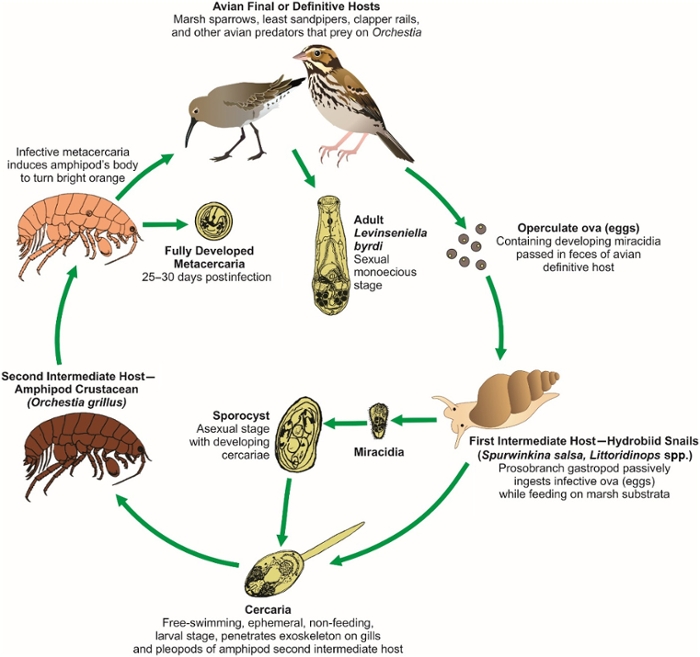
Adults of the parasite Levinseniella byrdi sexually reproduce within shore and marsh birds. Eggs are passed in bird feces and consumed by snails. Free-swimming larvae emerge from the soft body of the snail and swim in the water column. The larvae penetrate and encyst in a crustacean host (here the amphipod Orchestia grillus), where they develop in the body cavity into large "metacercariae."
The infective stage of L. byrdi manipulates at least two amphipod traits: body color and behavior. Once the conspicuously colored, orange amphipods move into open habitats, they are likely more susceptible to bird predation and the parasite is transferred up the food web.
Bird and snail images are general representations of animals and not exact drawings of species mentioned.